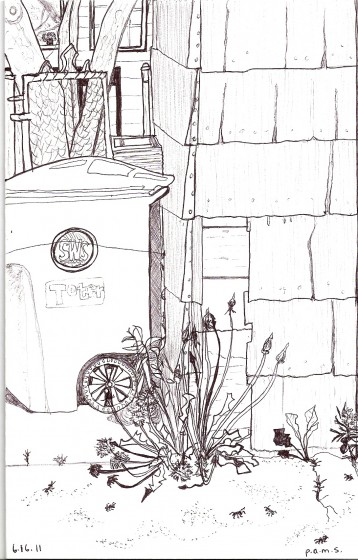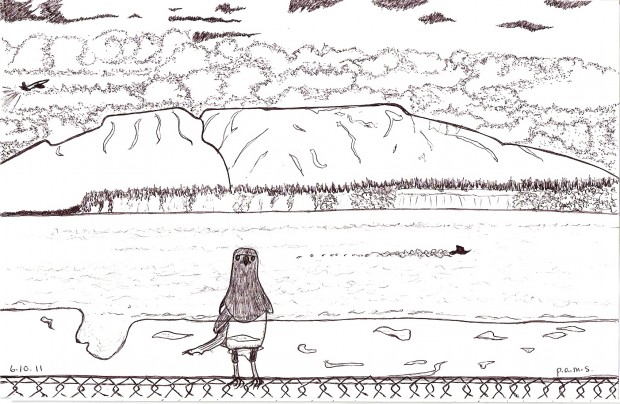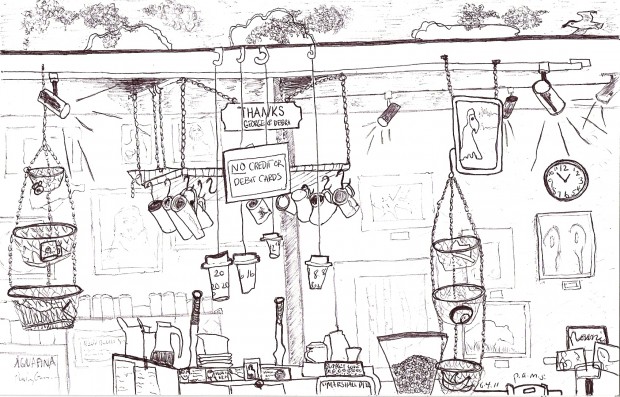I happened upon this piece of writing that I did 8 years ago. It reminds me of how important landscape is to me. Most of what I end up drawing is landscapes of varying sizes. It also gives a taste of what it’s like to “come home” to Anchorage after spending time in the “Lower ’48”– which is, at minimum, 3 1/2 hours of flying time away.
It is mid-April. Flying in from the south, from Seattle, if you were
just below the low, gray moving clouds, you would see crest after crest
of white mountains, sharp and tongued boldly with glaciers. It is a
place where Mother Nature will not be thwarted. It is dense and rugged,
this mountain landscape.
There would have been for you to see, if there
had not been clouds, a scattered pattern of tiny towns separated by
mountains, glaciers, fiords, tidewater. In the towns you might have
seen, had you been able to see that far below, small fishing boats
plying the waters. Fishermen swigging coffee, smoking, with intense,
competitive eyes.
You would have been captivated by the activity in the
Copper River Delta, the home of the famed Copper River Kings and Reds.
The eyes of the fishermen, and every muscle, attend toward the goal of
holding their grounds and securing the fish. The activity of the
fishermen, wind beaten. They’d prepared their craft during the winter–
painting, patching. With the approach of spring, life quickened. The
clouds scarcely made way for the blue. When they did, it was a real
event for the townspeople. They were out– in the street, in tiny
towns. Down to the grocery, the cafe, the bar, sharing conversation.
Not that they didn’t do so at other times. Rain never stopped anyone.
Nevertheless, folks kind of went crazy in the sun.
Now, however, your plane is approaching Anchorage. You are over Cook Inlet, and as you veer around toward the runway, you see the shapes the tide makes in the
clay. The sky is gray. The clay is gray. The water is gray. Used to be
there were tiny boats made their way between Hope on the other side of
the Turnagain Arm and the railroad line. It was a dangerous routine.
These men knew the shifting of the tidewater of the Arm like the backs
of their hands. No one makes that trip anymore. The Gold Rush is long over– along with its unique motivation for living and thriving in Hope– remote yet so
close to Anchorage.
You are almost on the runway. You see the black
spruce, skinny sentinels, coming to meet you, or you them. The wheels
touch. The plane screams to a halt. You are home. But don’t forget now
where you are and when you go to the cafe for a latte, don’t forget
your place in the scheme of things.
Pam McDowell Saylor
May 9, 2003


